I've never been to Japan but from movies, tourism promotion and friends' travel tales, I've imagined many things about it as a holiday destination. My borrowed impressions painted Tokyo as the epicenter for a crash course on J-Pop culture, Kyoto as the chief city to retrace the footprints of imperial Japan, Hokkaido to fill up on fresh seafood, April is the time that an explosion of cherry blossoms sweeps across the nation, and Mount Fuji will take your breath away. Literally. If you've not heard, the Aokigahara Forest at the northwest foot of Mount Fuji is notorious for being a suicide forest.
However, of all the impressions I've formed about Japan, there's one thing that I've never associated the country with... that it is also a beach resort perfect for a relaxing getaway.
But thanks to CTC Travel and Okinawa Convention and Visitors Bureau, I got to break my nihon virginity and toed my first foray into Japan with an exploration of the Yaeyama group of islands. For as far as Japan off-the-beaten-track goes, I've definitely reached the edge!
We took a specially chartered Singapore Airlines flight by CTC Travel direct to Okinawa Naha Airport (5 hours) and connected to a domestic flight to Ishigaki Airport (45 minutes) which greatly cut down the travel time. Check with CTC Travel on their next available direct chartered flight to Okinawa (currently in March and October) and upcoming packages to Yaeyama Islands.
I've never thought that my numero uno trip to Japan would be a sun-sea-sand type of holiday as I've always envisioned my first visit to coincide with the season of sakura in Tokyo. You know, it's kind of like you want your first time to be really special.
But having taken in the sights, sounds, tastes and feel of Ishigaki, Iriotome, Taketomi and Kohama, I'm glad I started experiencing Japan right at its roots... where nature is allowed to be natural and a good time can be had with just a three-stringed shamisen on a buffalo's back.
Ishigaki Island
Our exploration of Yaeyama Islands began with a touchdown at Ishigaki Island, the biggest island and administrative core of the group where 80% of the southernmost population resides. While Ishagaki is very developed with urban infrastructure and good-looking resorts, nature is never far with spongy mountains, rolling greens and scenic bays a short drive away.
We spent about 2 days in Ishigaki and got to exhaust our vocabulary for blue at Kabira Bay, go on a snorkeling and diving excursion not too far from shore, wormed through a prehistoric underground limestone cavern, climbed the observatory at Mount Banna, went rural at a traditional Yaima Village, had the rare opportunity to step inside an astronomical observatory for star-gazing, and had our tastebuds delighted!
It was also at Ishigaki that we were initiated into the secret of the Okinawan's longevity. According to research, Japan has the highest population percentage of centenarians and the highest rates are found in the Okinawa Prefecture where Ishigaki is a part of.
A holiday destination that adds years to your life... why not?!
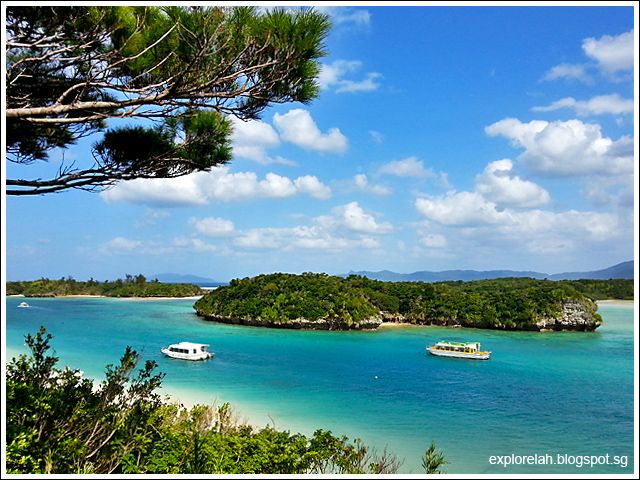 |
| Kabira Bay at Ishigaki Island. The bay is a no swimming zone to minimize disturbance to the black pearl aquatic farms nearby. Visitors can board glass bottomed boats to observe the sea life below. |
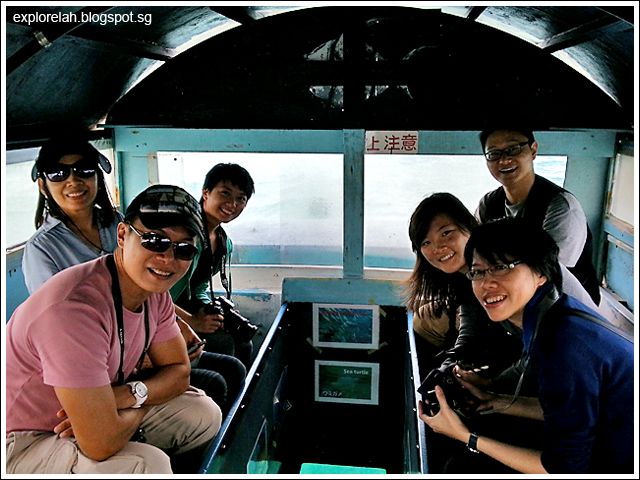 |
| Onboard a glass-bottomed boat to find dinner, I mean, appreciate the underwater ecology. Whoops! |
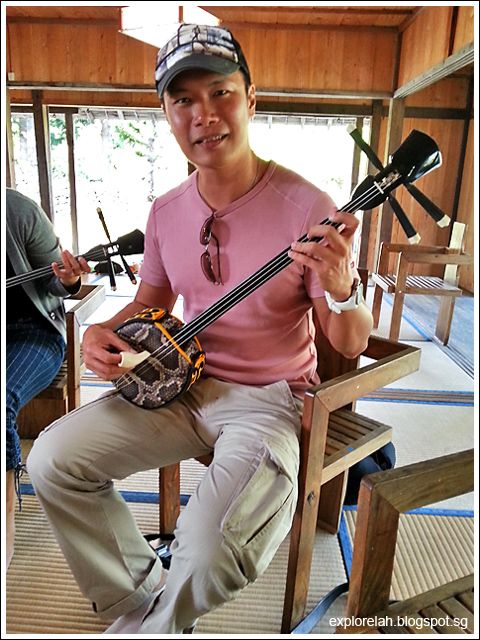 |
| Although it has only 3 strings, the shamisen is so hard to master! Well, maybe because I have spastic fingers. |
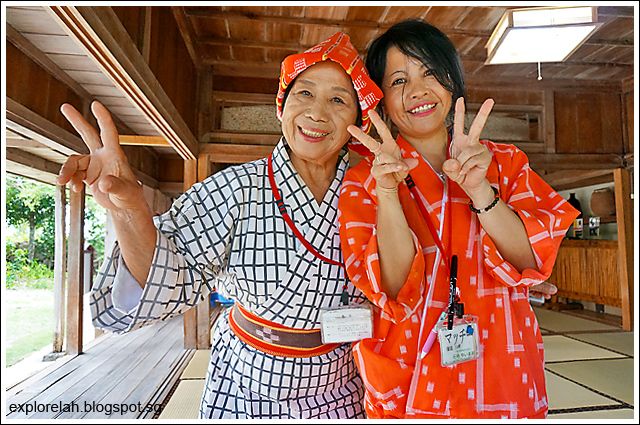 |
| These 2 'villagers' at Ishigaki Yaima Village made me feel young again. |
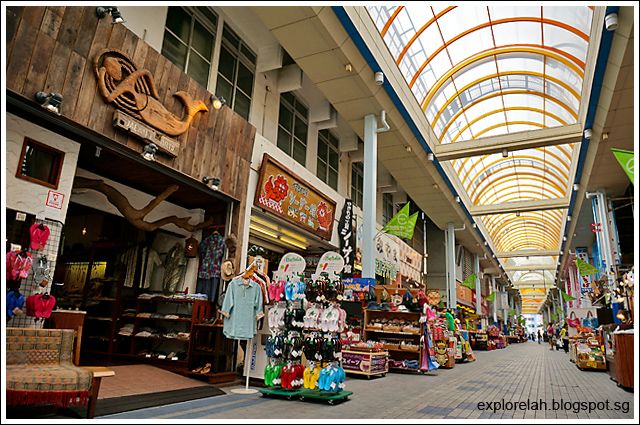 |
| To bring home some souvenirs, we came to the Yu-gurena Mall which is really just a two-street covered shopping arcade. |
 |
| Worming through the prehistoric womb of Ishigaki where the island's geological history are recorded on the stony pillars. The star at this gallery of rocks is a stalagmite formation that resembles the famous Gibil cartoon character, Totoro! Check out my Instagram album to see what it looks like. |
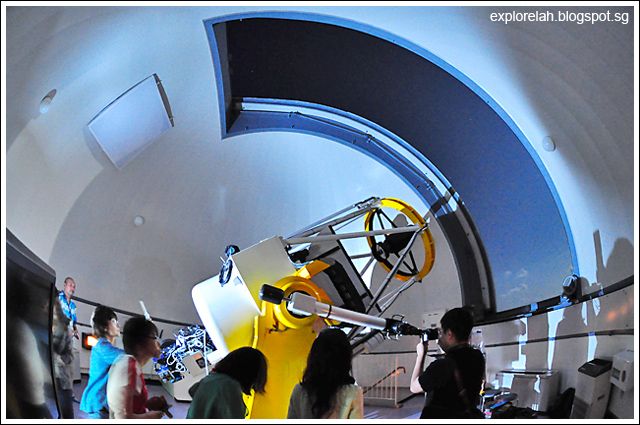 |
| From looking beneath the ground to gazing beyond the sky, Ishigaki Island is an explorer's playground. |
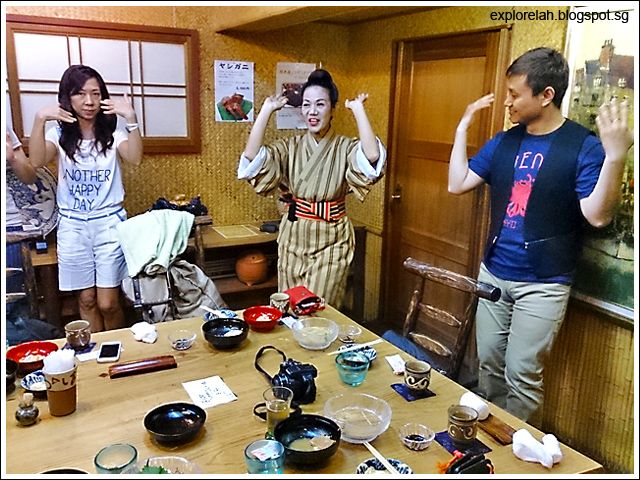 |
| The other part to the longevity formula is having fun. One of our dinners at Ishigaki was a treat as much for the stomach as it is for the spirit with song and dance! |
Iriomote Island
The next island on our trail was Iriomote Island, the second biggest island in terms of land surface area after Ishigaki. Iriomote is a 35 minutes boat ride from Ishigaki and home to pristine naturescape that celebrates the handiwork of nature in the form of mangrove lined riverine, secluded waterfalls and star sand beaches.
At Iriomote, you can also get on a water buffalo taxi to the almost conjoined Yubu Island to visit a rustic outdoor theme park.
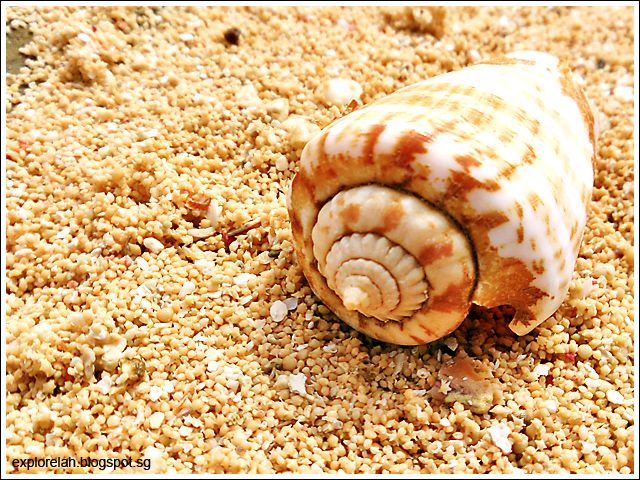 |
| One of the attractions that got us most excited on the trip was the star sand beach at Iriomote Island. Can you spot the star-shaped sand grains in the above photo? |
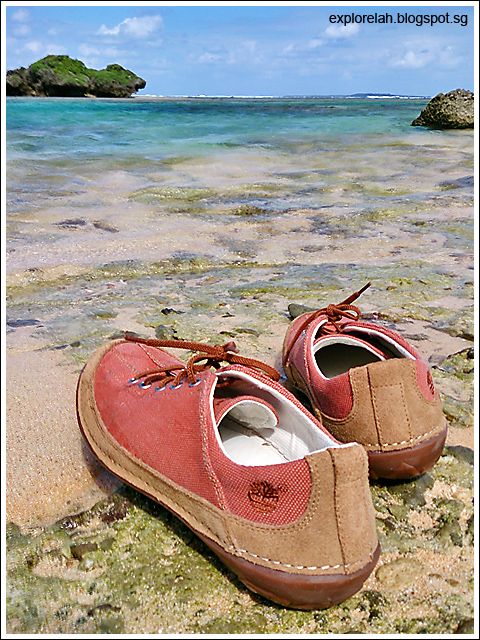 |
| Although my Timberland walkers were unbelievably comfortable, I couldn't resist going for a wade in the turquoise waters. |
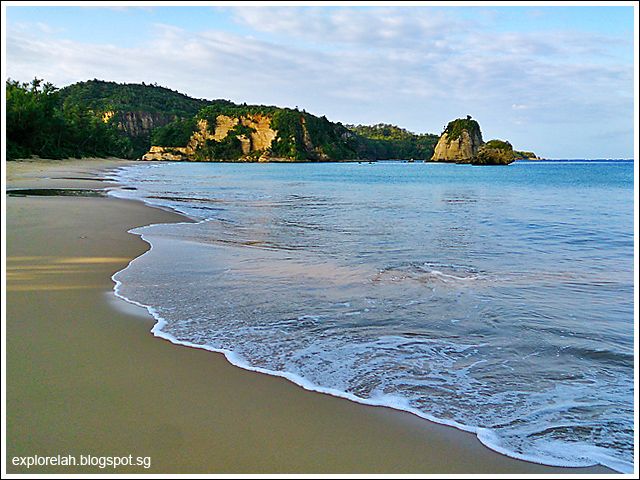 |
| Our night on Iriomote Island was spent at Nirakanai Hotel. This shot of gentle surf washing over the coastline like a sheet of liquid glass is the beachfront at the hotel. |
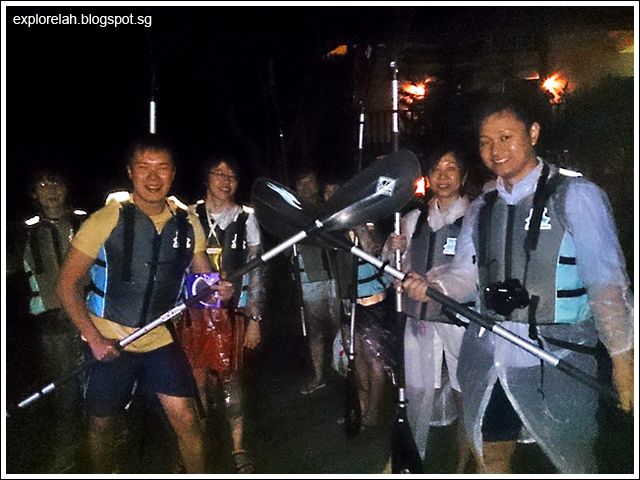 |
| Nirakanai Hotel organizes night kayaking at an open lagoon not far away. I love kayaking but have never paddled at night. What a thrill! |
Taketomi Island
The third island we checked out was Taketomi Island, which is a mere 15 minutes boat ride from Ishigaki Island. Taketomi is home to the ultra-luxe Hoshinoya Resort as well as the more budget friendly Peace Island Hotel. This has got to be the trip where I've seen the most hotels!
Other than hotel inspections, we also found ourselves on the back of a buffalo cart once again for a tour of Taketomi Village, went to the island's star sand beach (Kaijihama Beach) and had some splash time at Kondoi Beach. dropped by got to visit a really nice beach that stretches without end into the ocean.
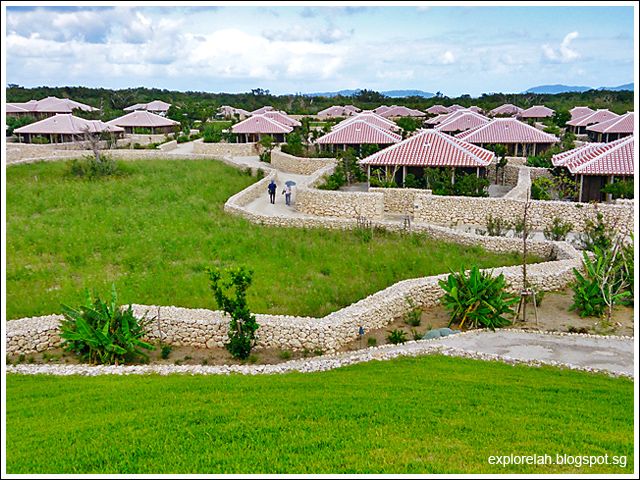 |
| Hoshinoya Taketomi Resort is built in the style of a traditional Okinawan village with 48 individual luxurious villas. Expect to pay the upwards of S$500 per person per night. |
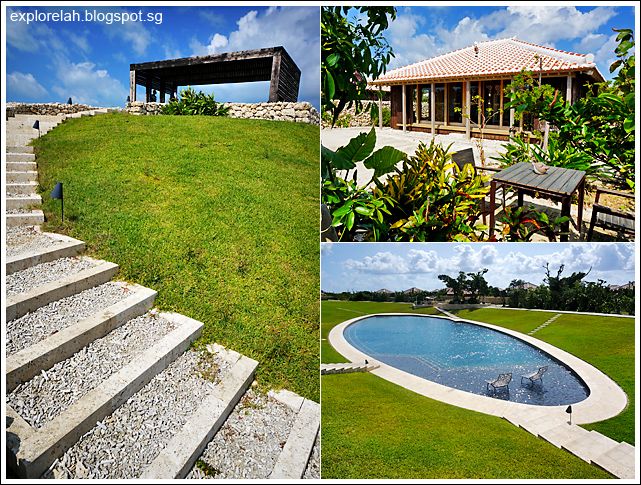 |
| An observation deck overlooks Hoshinoya Taketomi Resort while the unusual oval pool is a conversation piece. The resort is great for honeymooners. |
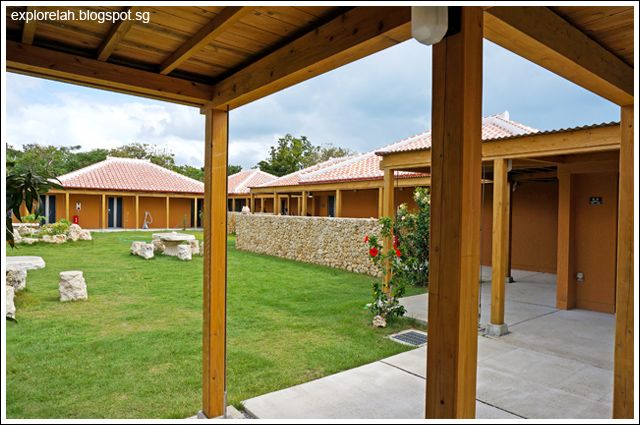 |
| A more economical accommodation on Taketomi Island is Hotel Peace Island that offers rooms that can sleep up to four at around S$300 per room per night. |
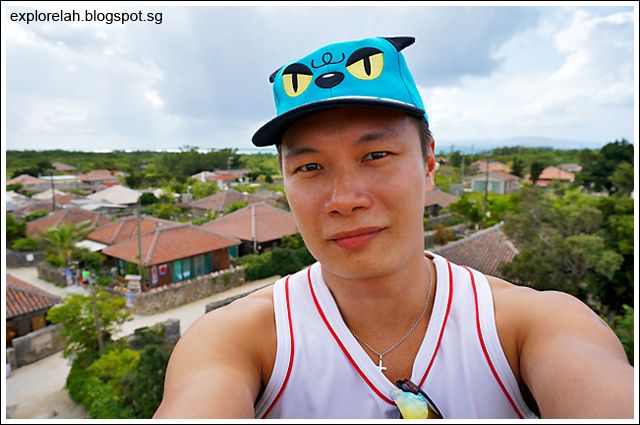 |
| At Taketomi Village is the Nagomi Lookout Tower where you can have a panoramic view of the village. But watch the narrow stairway leading up the tower though. It is quite treacherous. |
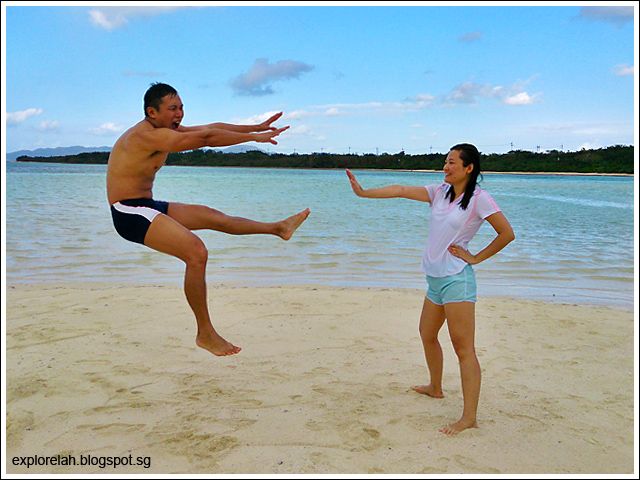 |
| Hadouken on a sandy pit at Kondoi Beach. Notice how far away we were from shore. |
Kohama Island
On the last day of our trip to Yaeyama Islands, we made a dash for Kohama Island (15 minutes boat ride from Ishigaki). Ishigaki Island is the gateway to the surrounding islands as there are no direct ferries inter-connecting the smaller islands. That is, to get to Kohama, we can't just take a ferry from Taketomi but have to go back to Ishigaki and take a ferry from there.
Kohama is a small island anchored by two high caliber resorts - Hoshino Resort Resonare and Haimurubushi Resort. The former is a sprawling golf resort while the latter is a center for sea sports.
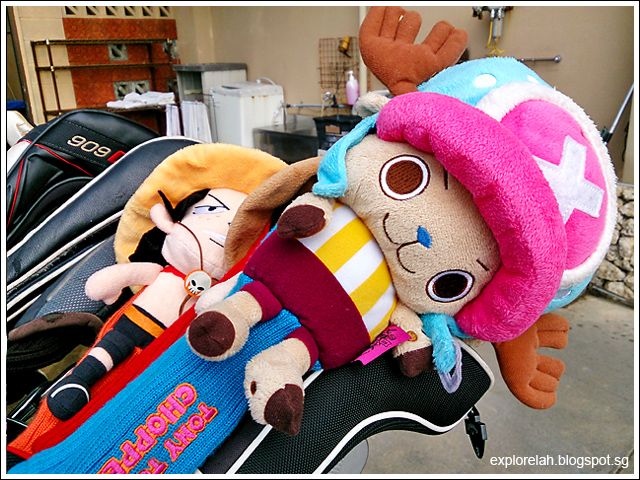 |
| Spotted these kawaii golf headcovers at Hoshino Resort Resonare. They definitely added a touch of whims to a very serious game. |
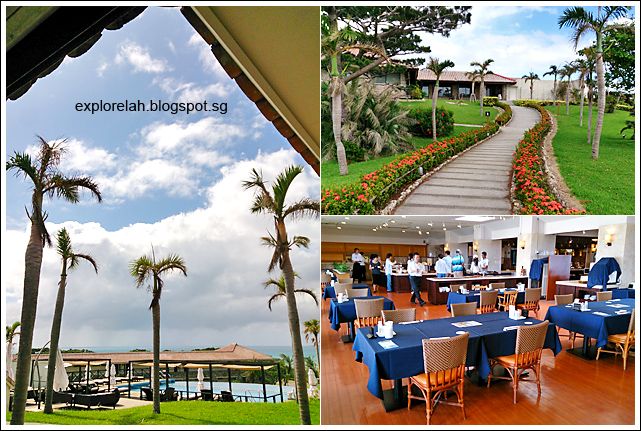 |
| Snapshots of Haimurubushi Resort where we had lunch. |
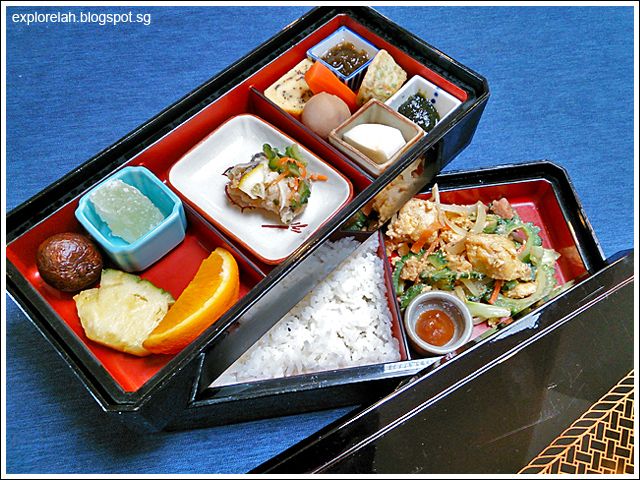 |
| Unlike the common single-tiered bento boxes, our lunch was served in a double-tiered lacquer box. |
 |
| My moniker for Haimurubushi Resort is the "hotel of rides". I got to drive the island buggy to the beach as well as ride the jet ski and banana boat. |
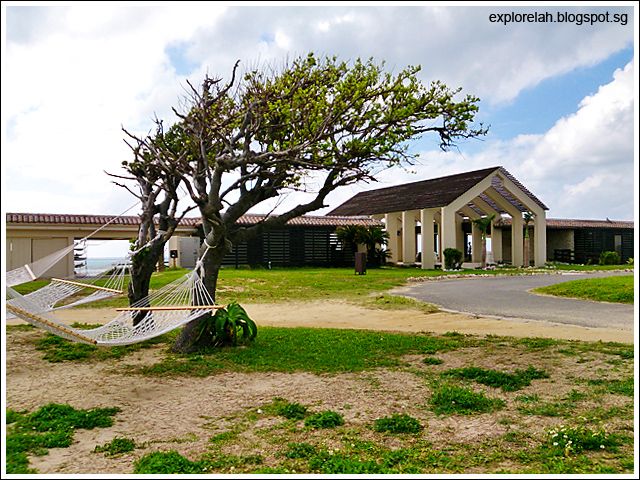 |
| The Haimurubushi Resort's sea sports center and clubhouse. |
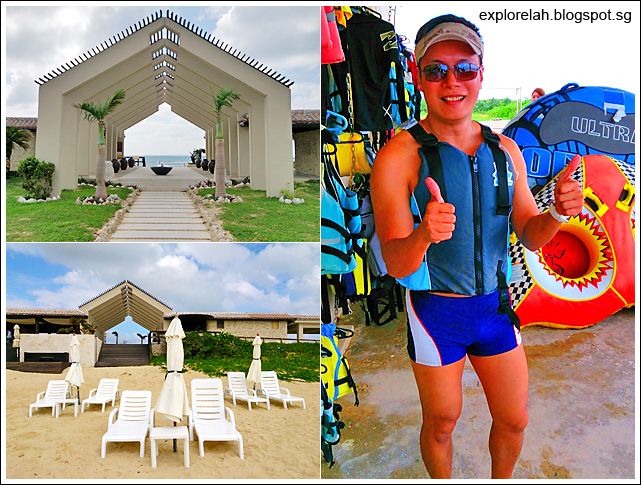 |
| Depending on weather conditions, certain sea sports may or may not be available. But it is just as nice to do nothing and chillax on the recliners with a cocktail in hand. |
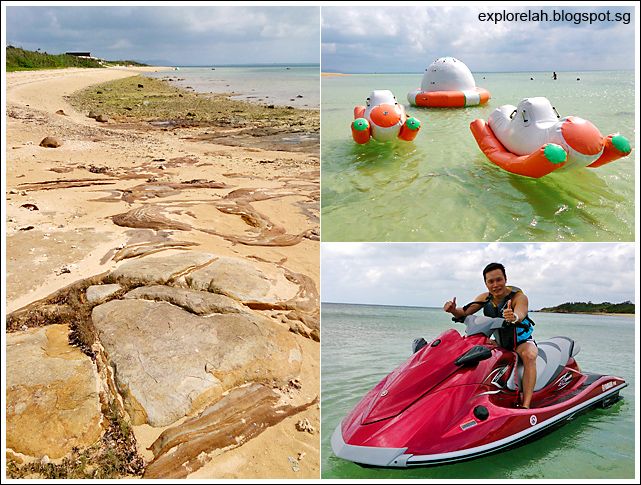 |
| The private stretch of beach stretches for miles with aquatic thrills for kids and adults. |
The other thing I really enjoyed on the trip was the food. I felt myself getting healthier with every bite I took of the fresh produce from the islands. When I go on group tours, I usually restrict my food intake to minimise the need for toilet time but not for this trip. I was practically a human vacuum cleaner.
Best of all, the sub-tropical weather in autumn had just the right degree of hot and cold. It felt like going to the beach in an air-conditioned room. You get the sun, sea and star sand but not the sweat!
This trip has been made possible by CTC Travel and Okinawa Convention and Visitors Bureau.
Photos shot with Sony Alpha NEX-5T and Sony Xperia Z.
Sole comfort and style taken care of by Timberland.
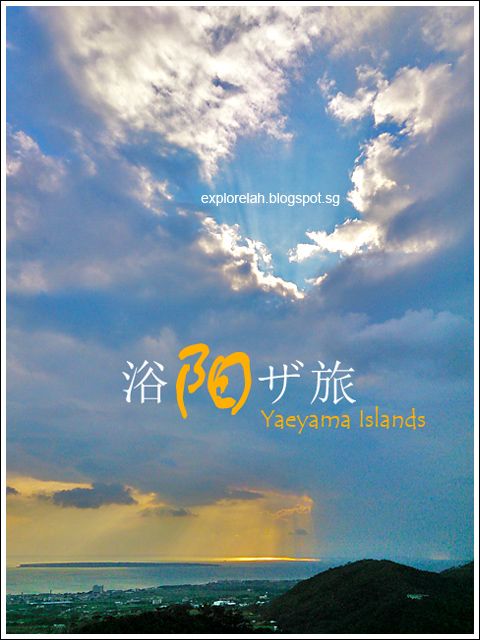
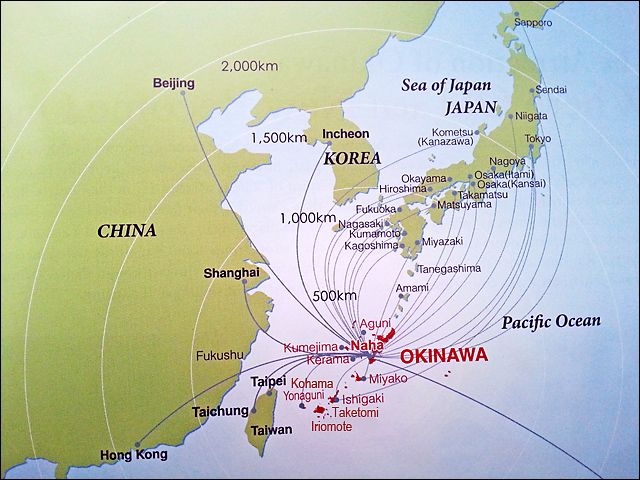
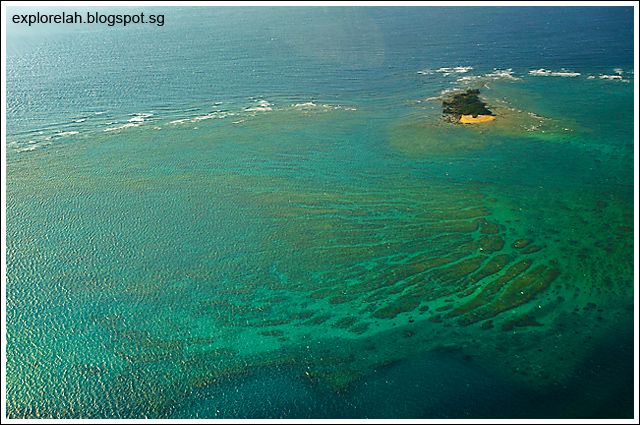
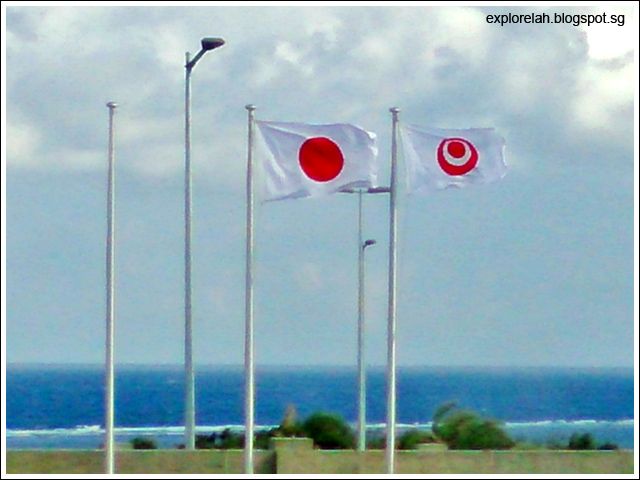
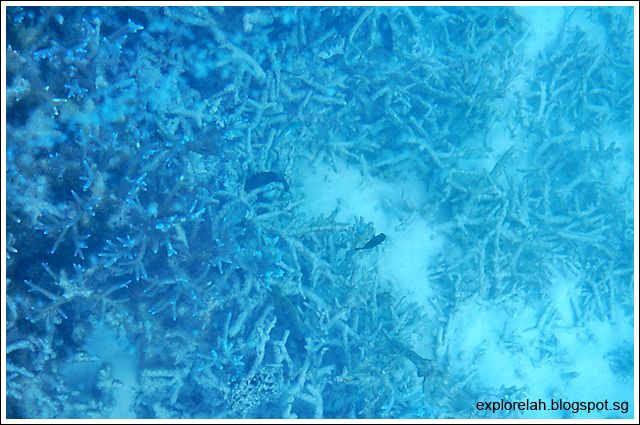
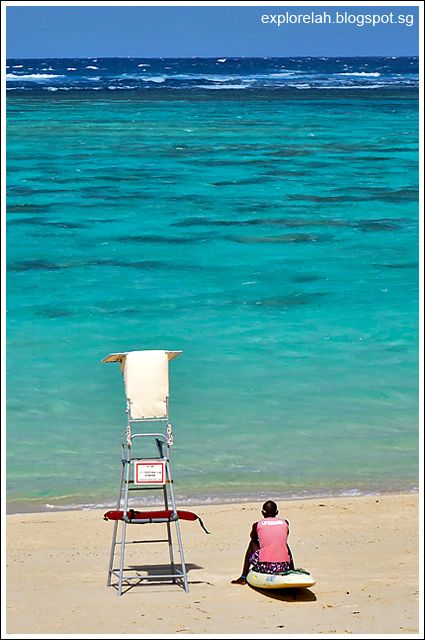
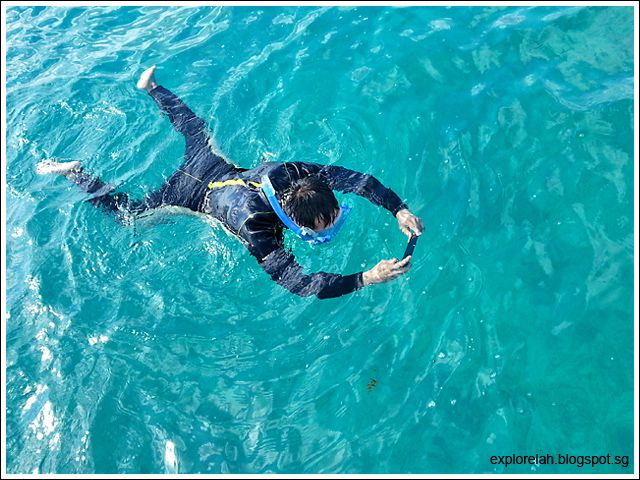
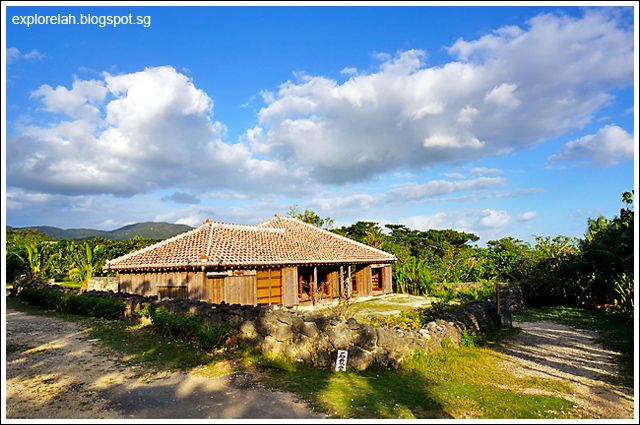
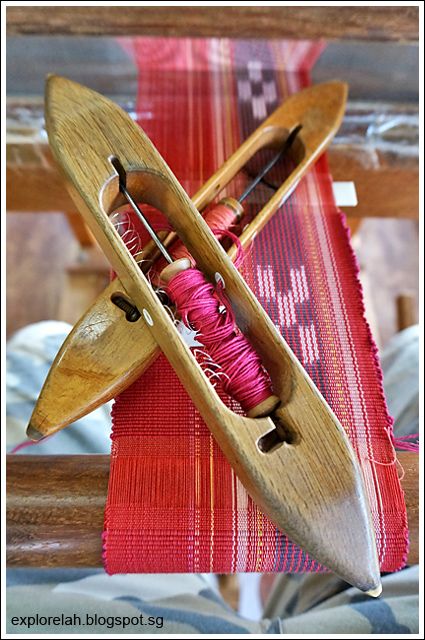
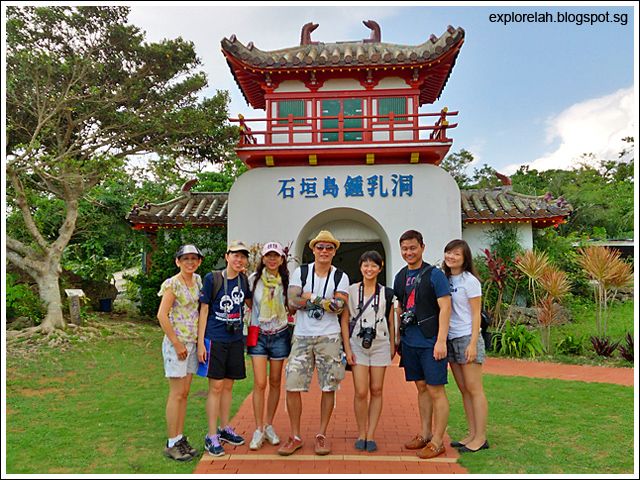

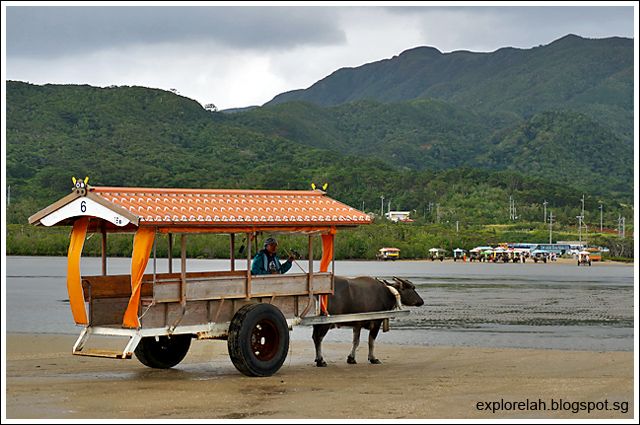
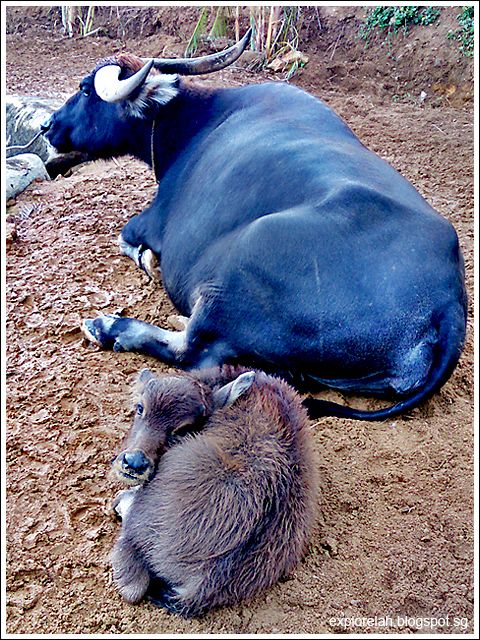

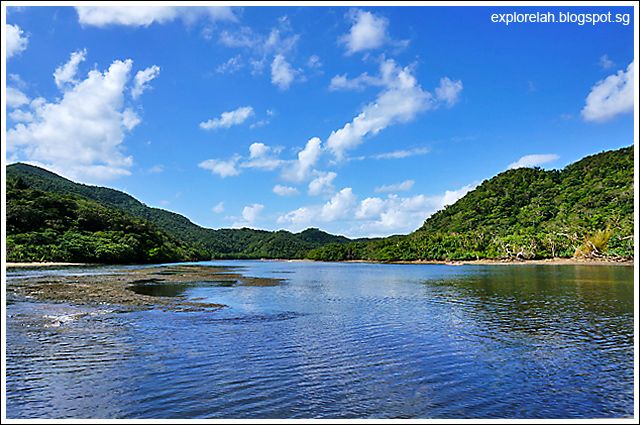
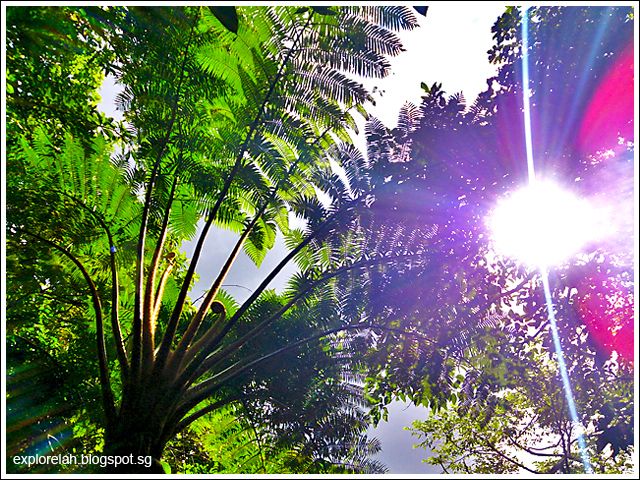
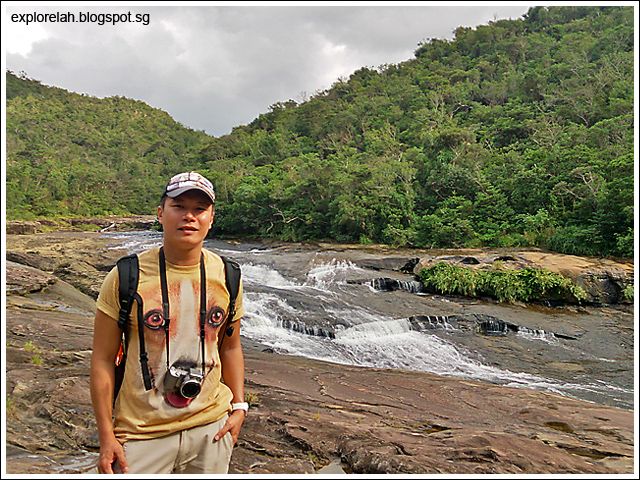

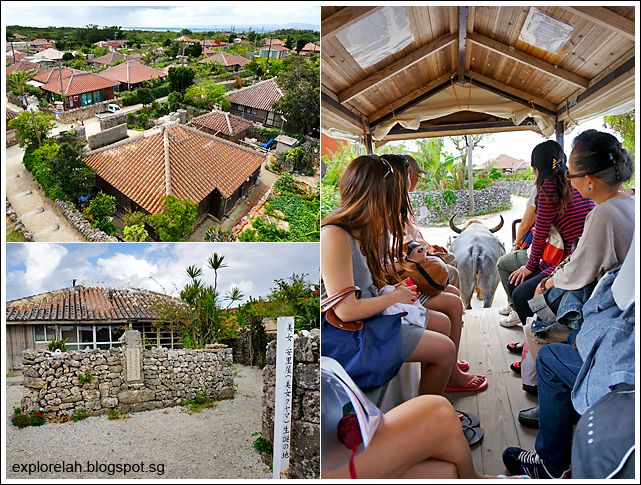
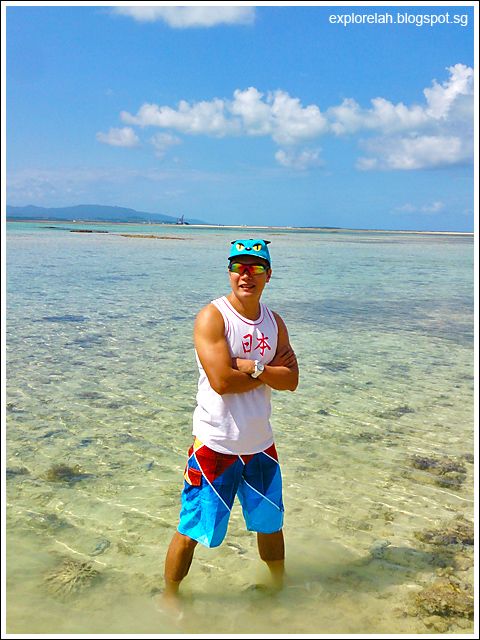

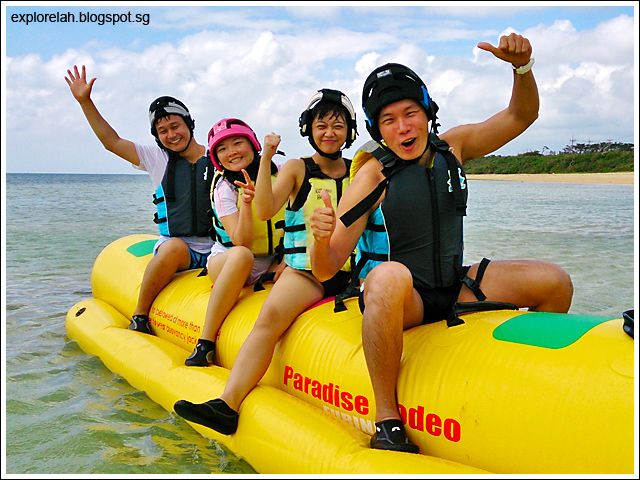
No comments:
Post a Comment